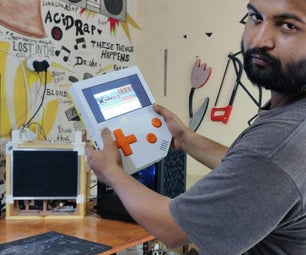Introduction: Broadcast Your Own Number Station on the Raspberry Pi
I love number stations, shortwave radio stations from the Cold War that broadcast cyptic messages to operatives out in the field. Some number stations are still in operation today.
I thought it would be fun to make one of my own and found something clever and simple by korn101 on Github to get me started. As soon as the Pi is booted up it will automatically start broadcasting your message letter by letter, using the phonetic alphabet.
Due to the way the Raspberry Pi broadcasts, it is capability to broadcast outside of the intended FM frequency. This is only intended for fun so please be sensible. I am not responsible for any trouble resulting from your build. Check the laws of your area.
Step 1: Here's What You'll Need
Here's what you'll need:
- A Raspberry Pi. I'm using a Pi Zero for this tutorial. As far as I can tell this doesn't work for either Raspberry Pi 2 or 3.
- This won't work for Raspberry PI 2 or 3.
- SD card (4gb or over) A short piece of wire.
- A network cable.
- A computer.
- A radio to test our build. I use the one on my phone.
Step 2: Preparing the SD Card
We first need to set up the SD card. For this I'm using PiBakery as it allows you to build easily build a custom version of Raspbian. Methods seem to vary greatly on how to get a script to run automatically on start up with the Raspberry Pi. For me PiBakery makes the process a great deal easier.
Once downloaded and installed from the PiBakery website http://www.pibakery.org/ we need to add a few blocks to ensure the PiNumberStation is run automatically. Arrange the blocks as shown in the screenshot making sure to specify the following path for the 'Run Python File' block as:
/home/pi/PiNumberStation/PiNS.py (It's case sensitive don't forget!)
Write to the SD card once completed. Easy.
Step 3: Installing PiNumberStation
Insert the SD card into your Pi, start it up and connect to it through the method most convenient. I'm using Putty in my screenshots.
To install PiNumberStation we need to clone the Github repository. This is simply done by typing the following:
git clone https://github.com/korn101/PiNumberStation
Step 4: Configuring PiNumberStation
There are two things we need to configure, the message we want to transmit and the frequency we want to transmit on.
First the frequency. This is done by first navigating to the PiNumberStation folder by typing: cd /home/pi/PiNumberStation/ then once there type: sudo nano PiNS.py to enter the file. Scrolling down you will see where to set the frequency. Don't forget to save your change by pressing Control X followed by Y.
Next we need to do something similar with the message.txt file. Type: sudo nano message.txt to enter the file and amend its contents to whatever you would like your message to be. Control X to save once completed.
Step 5: And Finally...
The only thing left is to attach your wire to GPIO 4 and reboot your Pi. After a short period your Pi should start broadcasting your message on the specified frequency.
Thank you for sticking with this tutorial and have fun running your own number station.









